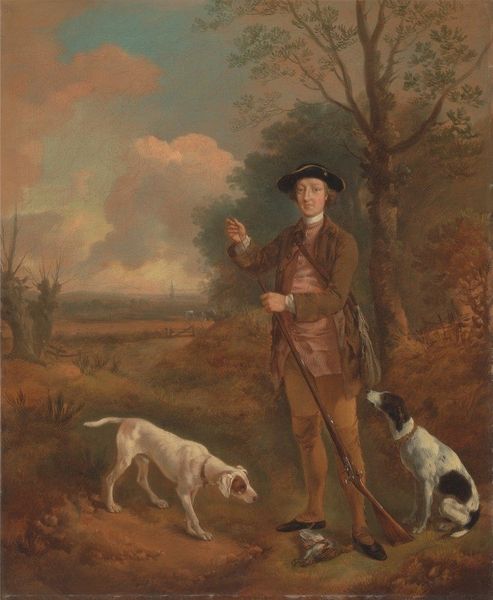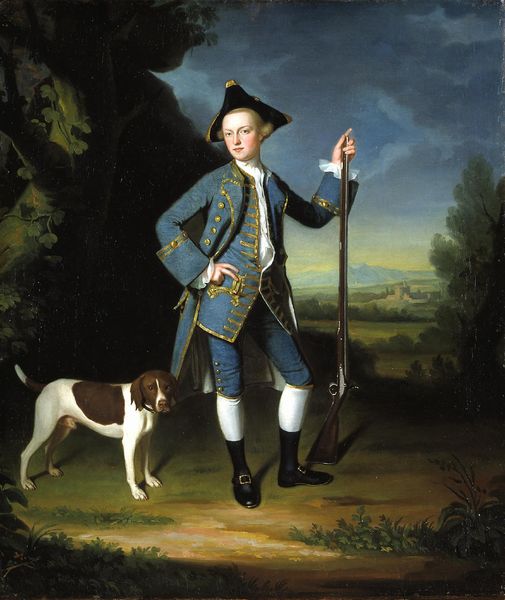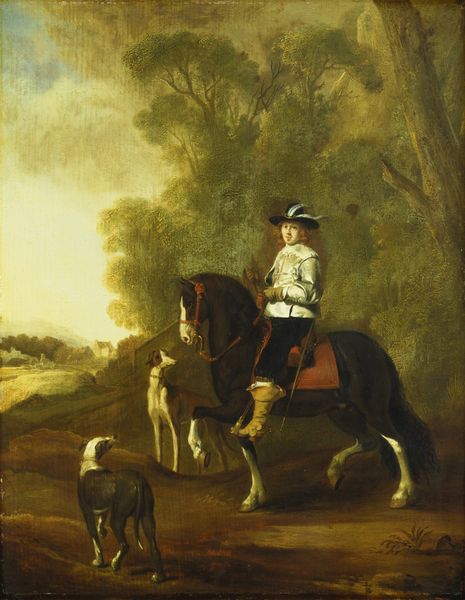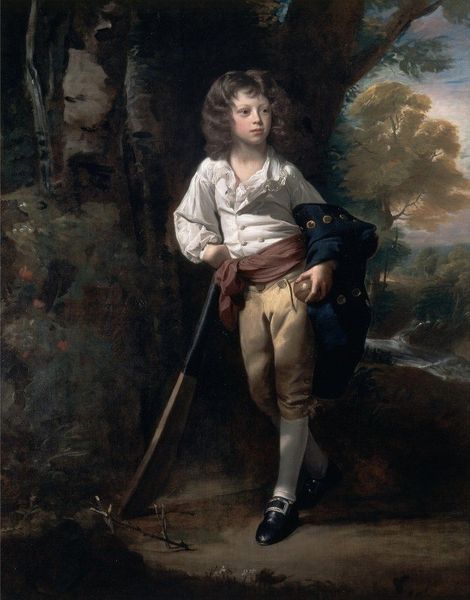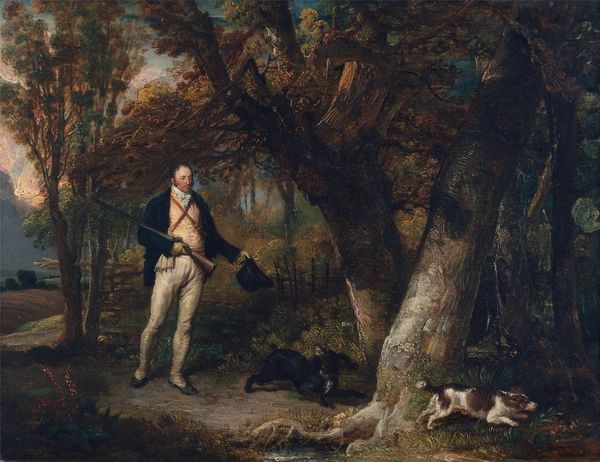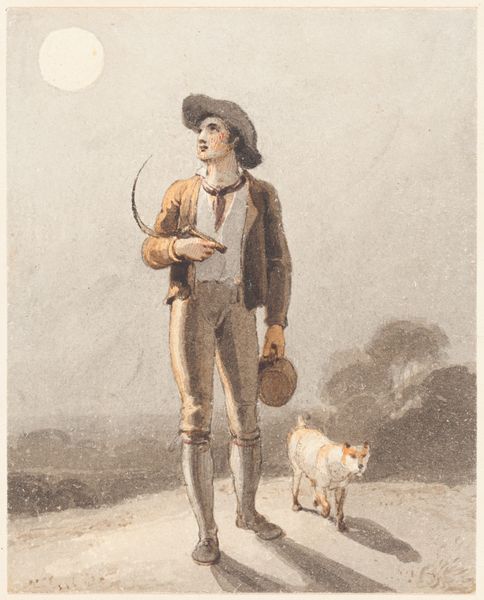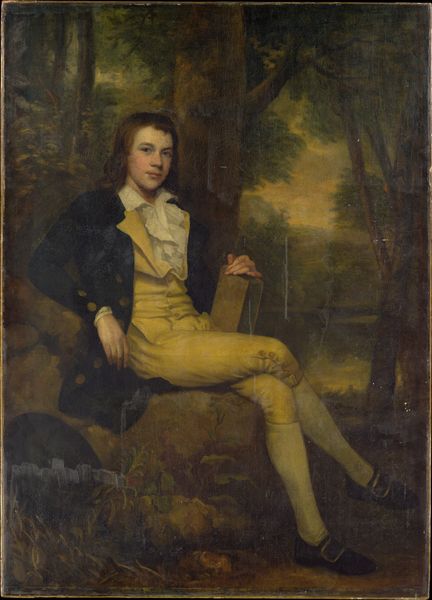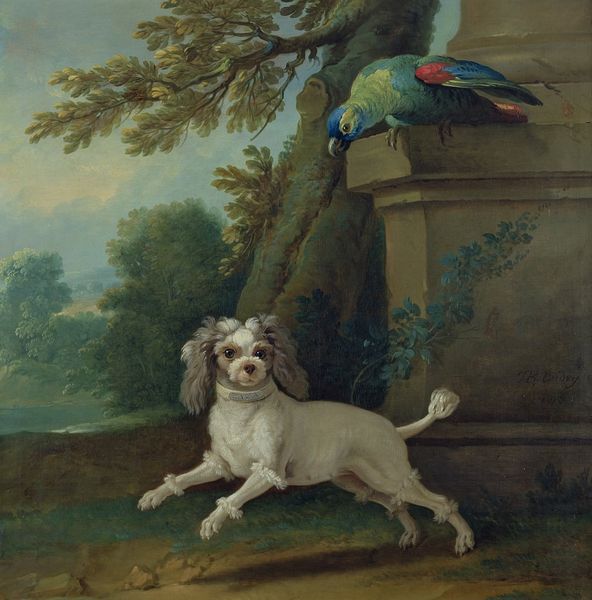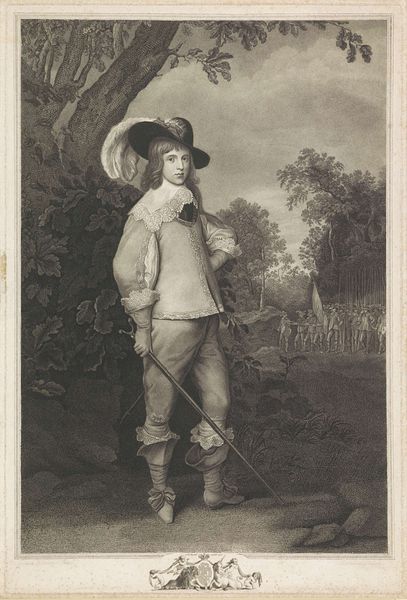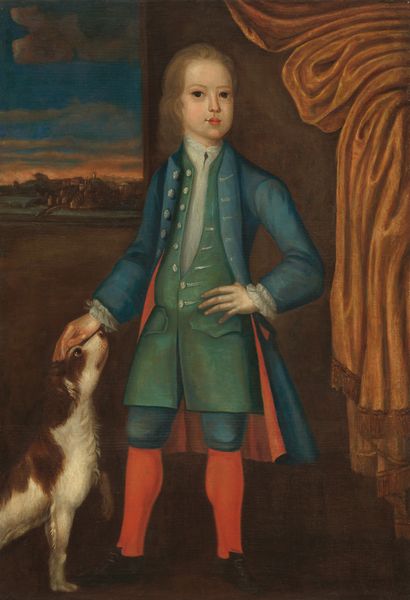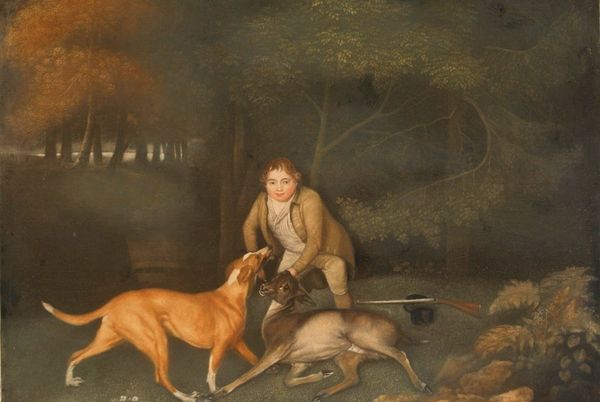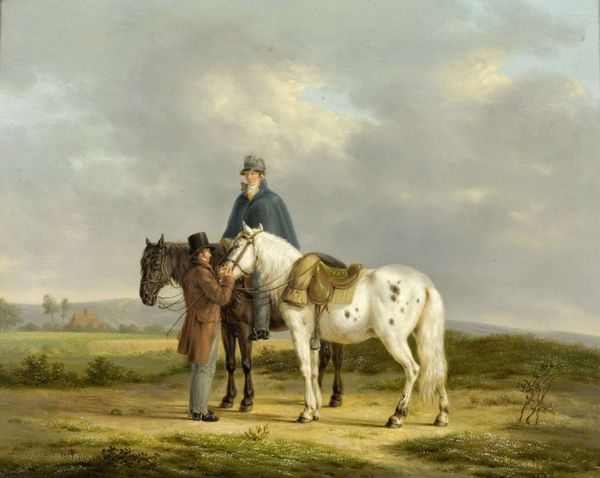
Dimensions: 53.6 x 43.0 cm
Copyright: Public Domain
Editor: So, here we have Georg Karl Urlaub's "Portrait of Friedrich Adolph Carl von Holzhausen" from 1789, painted in oil on canvas. I find it kind of melancholic, almost staged in its formality. What strikes you most about this piece? Curator: Well, first off, look at the social dynamics embedded in this image. This isn’t just a portrait; it's a declaration of class and lineage. In late 18th-century society, who got their portrait painted and *why*? Think about the power structures being reinforced here. Editor: That’s true, it definitely feels like a status symbol. What about the setting? The landscape almost seems to swallow him up. Curator: Exactly. Is the child at ease in this nature? Or is nature itself another prop, highlighting man’s dominion? And consider the boy’s attire – the finery juxtaposed with a somewhat untamed environment. There is this clear message, almost like indoctrination of youth into a particular lifestyle that will benefit some more than others. Who benefits from all that art? Editor: I see what you mean. It's like he is both part of and separate from the natural world, a representation of cultivated aristocracy in contrast with nature’s wildness. Is the dog important, symbolically? Curator: Absolutely. Loyalty, status, and the hunt were closely tied to aristocratic identity. This animal isn't merely a pet, but a signifier. Can you start seeing how a portrait like this upholds an entire social and political order? Editor: Yeah, now I’m seeing how it reflects and reinforces specific power dynamics, and that everything from the clothes, the landscape, the dog, speaks volumes about wealth and privilege at the time. Thank you for expanding my understanding of art. Curator: My pleasure. Art isn’t just pretty pictures. It's a dialogue about who we are and who gets to be seen and understood.
Comments
No comments
Be the first to comment and join the conversation on the ultimate creative platform.
